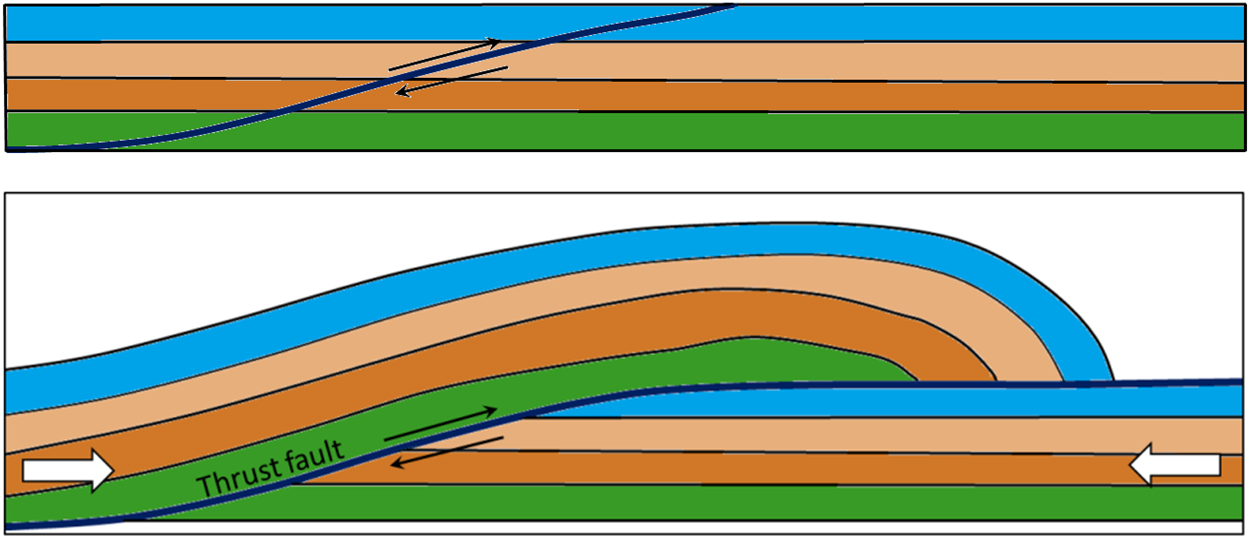

The study concludes by presenting a unifying model of crustal faults. Further, the study discussed the variation of temperature, confining pressure, and fluid pressure with crustal depths, and the implications for the rheology and mechanics of shear failure of the crust at those depth ranges. The study also relates the localization of shear deformation and seismic failure to the concentration of earthquakes along plate boundaries, thereby supporting the ‘theory’ of plate tectonics (Sykes & Sbar, 1973). For example, the relatively high slip velocities associated with seismic failure often result in temperature and/or fluid pressure perturbations of the fault zone. Sibson argues that a distinct fault rock texture develops along the fault surface depending on the velocity of fault slip, which allow distinction of rocks formed seismically or aseismically. Photographs of (a) fault breccia in interbedded metagraywacke-slate (brittle fault zone), and (b) ultramylonites (ductile shear zone) in deformed granite (Roberto Weinberg source: ).Īn analysis of the relationships between the style of fault failure (reverse, normal, and strike-slip), slip rate, and energy expended during fault failure is then presented. “Fault Rocks and Fault Mechanisms” ties all these different components of faulting into a coherent model of crustal fault zones.įig. Sibson himself had earlier discussed the elastic strain energy budget of active fault zones which is manifested in the accrual and subsequent release of the energy during failure (Sibson, 1974). (1972) had also shown that, in certain conditions, stable slip can degenerate into seismic failure. (1969) had earlier demonstrated that faults accommodate shear displacements (failure) either through intermittent seismic failure (unstable fault slip accompanied by earthquake rupture) or aseismic fault creep (stable fault slip without the release of strong seismic radiation). Field observations and petrological studies of the Moine Thrust by Nicol (1861), Lapworth (1885), and Teall (1918) had revealed the presence of distinct foliated rocks termed “mylonites” defining the fault zone. Louderback (1942) documented the early discussions on the association of earthquakes with faulting. We present below a summary of the article.

Considering that the topics addressed extend across multiple fields in structural geology and geomechanics, the article can be a challenging read for those that are least familiar with these disciplines. Concretely, Sibson (1977) established: 1.) links among the textures and lithologies that develop along fault zones (fault rocks), 2.) the rheological and crustal conditions of fault rock formation, and 3.) the mechanical modes of shear failure along active crustal-scale fault zones. Sibson (1977), was one of the first studies that established major connections between the rocks that form in faults, and their conditions and mechanics during formation at crustal scale. The paper “Fault Rocks and Fault Mechanisms” by R.


 0 kommentar(er)
0 kommentar(er)
